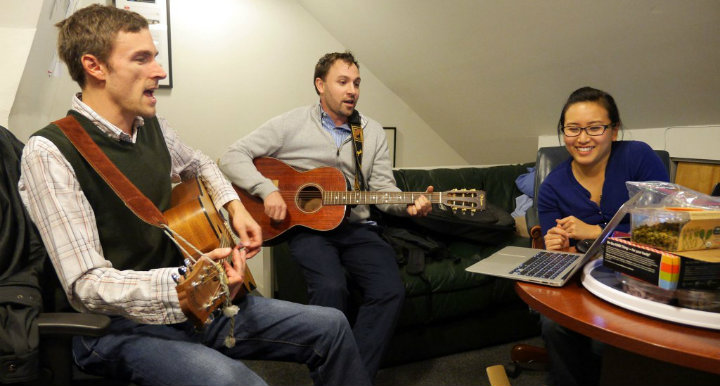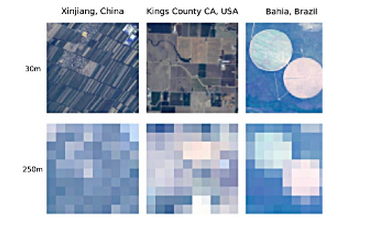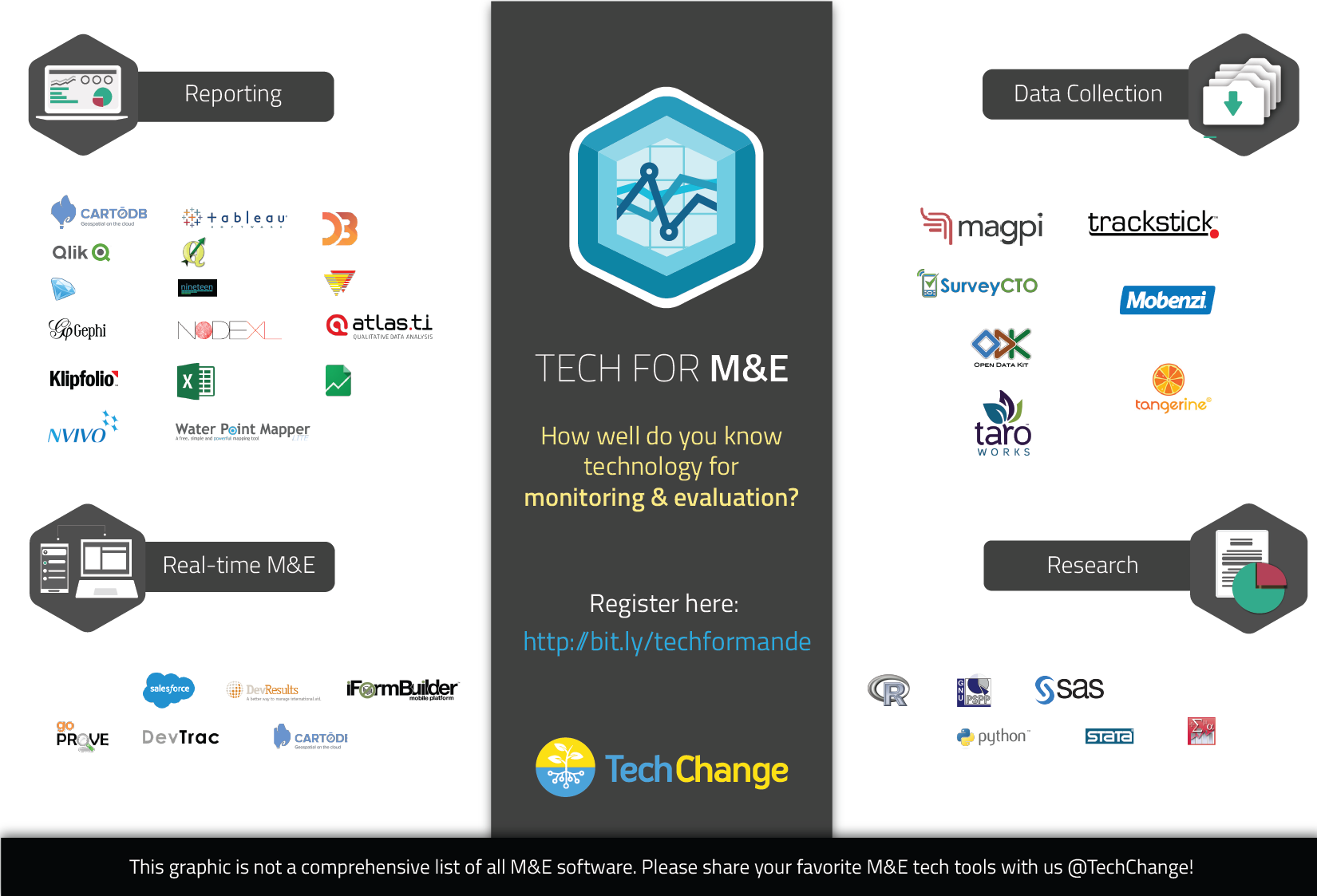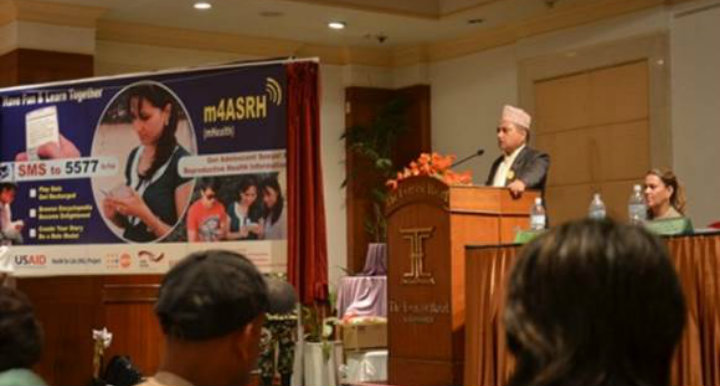What is it like to work in marketing and communications at an edtech social enterprise? Check out what TechChange’s Director of Marketing, Nancy Ngo, has to say about managing global campaigns that promote social change through technology training.
Where are you from?
I grew up in the DC Metro Area in the city of Falls Church, Virginia – a very multiculturally diverse suburb of Washington, DC.
What did you do before working at TechChange?
I started my career at Google’s headquarters in Mountain View, California where I promoted several of the company’s core Search products and advised senior executives including Marissa Mayer. Since then, I’ve done marketing and communications at various tech companies, U.S. government agencies, and non-profit organizations.
While completing my graduate program in International Economics and International Relations at Johns Hopkins School of Advanced International Studies (SAIS), I specialized in Southeast Asia international trade issues which ultimately brought me to a rapidly growing internet company in Vietnam called VNG Corporation (formerly known as Vinagame). Although I had done many online trainings independently, it was in Ho Chi Minh City where I had my first professional foray into edtech. I saw online education as a practical solution to address broken education systems that impact the global economy.
How did you hear about TechChange?
I found out about TechChange when reading the 2012 Economist article, “Geeks for Good”. As I learned about the company, I was struck by how unique TechChange was as a B Corporation – a certified social enterprise – located in downtown DC. I saw TechChange as a confluence of my interests in technology, international development, and an opportunity to apply my marketing and communications skills at an edtech startup to help grow the business at the ground level.
What exactly do you do at TechChange? What does a typical day look like for you?
No two days at TechChange are ever exactly the same. Generally, I manage integrated marketing campaigns to grow TechChange’s global learning community. These campaigns involve working with the team to communicate TechChange’s story and the impact of our trainings and alumni. They also involve finding new ways to reach more students across the world through partnerships and events. In addition, I manage the TechChange blog, social media channels, and media relations.
How did you get into marketing and communications?
I’ve always been a media junkie that loves writing. My passions for media, writing, and international affairs brought me to a public affairs internship with Time Magazine in New York City while attending the University of Pennsylvania. Since then, I’ve always been fascinated with the challenge of crafting the right messages to target audiences around the world in the right way and at the right time.
What is the most important lesson you’ve learned in international development and marketing?
It comes down to understanding your audience, wherever they are in the world, and being empathetic to their experience. In the context of the audiences we work with at TechChange, we constantly have to think about the constraints they are under including limited access to internet, inconsistent electricity, coordinating globally dispersed teams, and/or managing projects in the field. The key is understanding that there is no one size fits all approach to reaching customers, especially ones that are transient, based around the world, and focused on different functional areas and contexts.
Also, the best way to be successful at promoting a brand or product is when you wholeheartedly believe in what you’re promoting.
How do you keep up with the latest developments in marketing, communications, technology, and international development?
These days, I get my news mostly through social media platforms including LinkedIn (Pulse), Twitter, Facebook with the help of some very smart friends sharing useful links, and email newsletters. I also use aggregators including Feedly, Google News, and FlipBoard. I’m always looking for inspiration from great global brands that execute clever and effective campaigns. In addition, I find it very useful to learn from PR crises and branding mistakes that companies and organizations make as well.
The ever-evolving media landscape forces marketers to constantly keep up to speed on different ways to reach and interact with customers. I try to keep my marketing and comms skills sharp by teaching myself the latest technology tools and best practices in implementing these tools. I do this by frequently attending webinars, taking courses online and in person, reading industry blogs, keeping in touch with colleagues in my industry to share lessons learned, and trial and error in my day to day work.
What do you love most about working at TechChange?
TechChange is the type of place where you proudly wear your nerd on your sleeve! I enjoy the culture of fun camaraderie among tech-savvy international development nerds that have lived all across the world. It’s a work environment that empowers you with creative freedom to take ownership of initiatives that help grow the company. We’re all very autodidactic and are constantly learning new skills from both each other and outside of work with online courses and trainings as well.
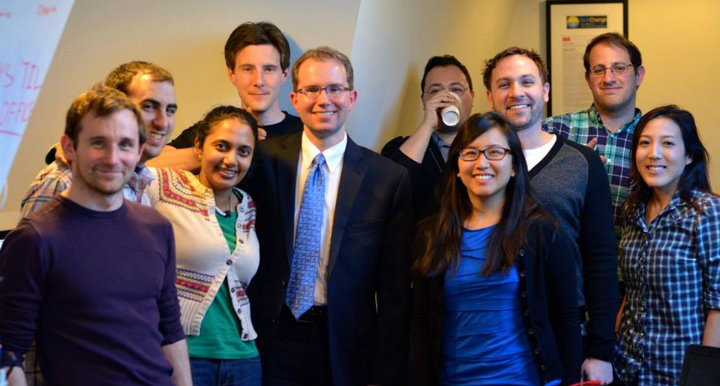
Nancy and the TechChange team with David Bray, Chief Information Officer of the Federal Communications Commission (FCC) at the TechChange office
What is your favorite TechChange moment so far?
It’s tough to list just one. I’ve really enjoyed our Fail Song performances, coming up with clever band names such as “CAPS LOCK CRAZY” and “Beauty School Valedictorian”, the time when the CIO of the FCC, David Bray, came to visit as a guest speaker in one of our courses, and many more. On a day to day basis, I love interacting with our global alumni whether it means hearing the challenges community health workers are facing on the ground in fighting the spread of Ebola, or learning about their career success stories with the help of their TechChange trainings over the happy hours we host regularly in downtown DC.
What do you do when you’re not at TechChange?
Reading, spending time with family and friends, salsa dancing, and planning my next travels.
If you had to direct someone to the best place to eat in D.C. where would it be?
My favorite Vietnamese restaurants are all out in the suburbs of D.C., especially in Falls Church.

